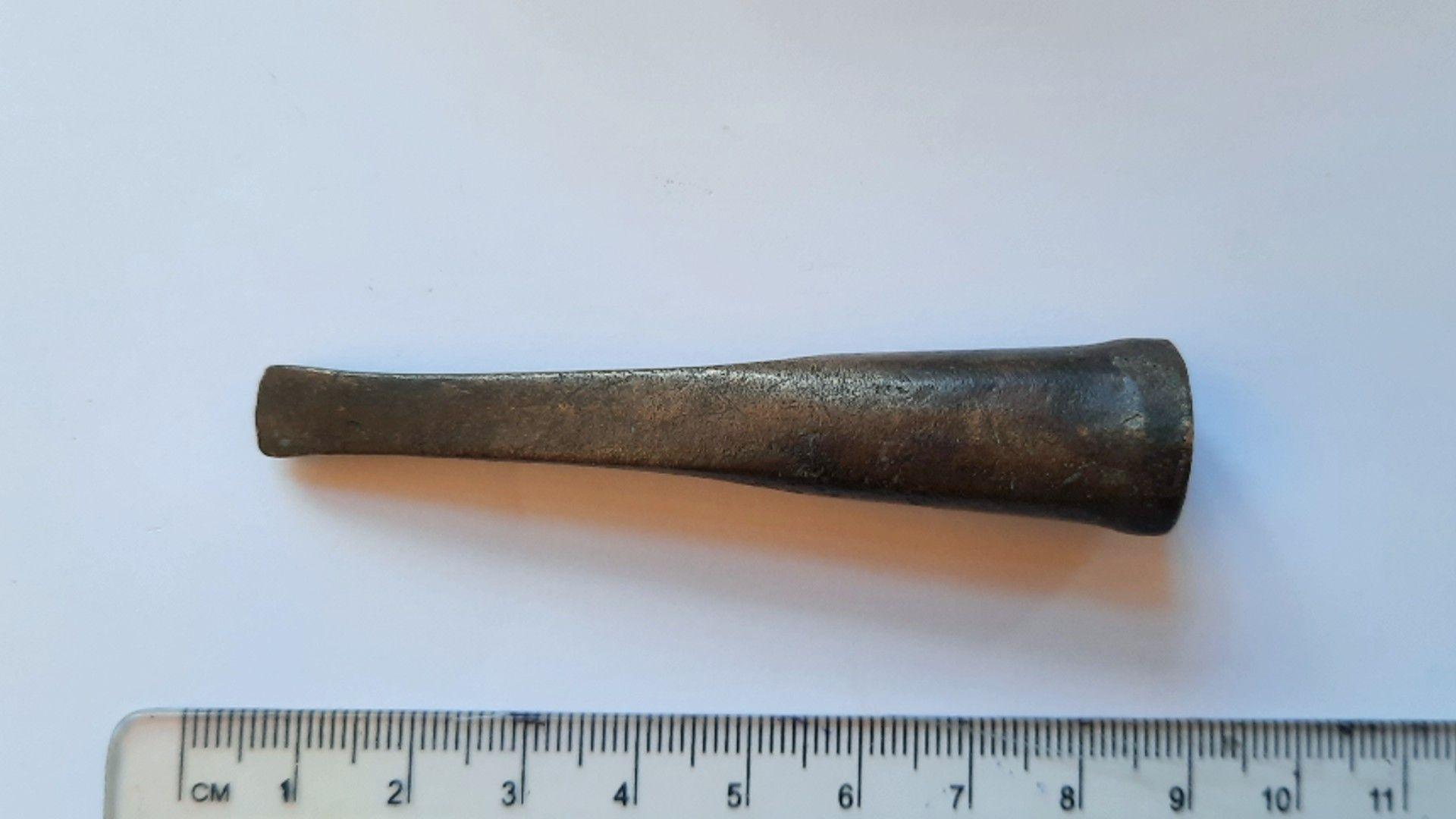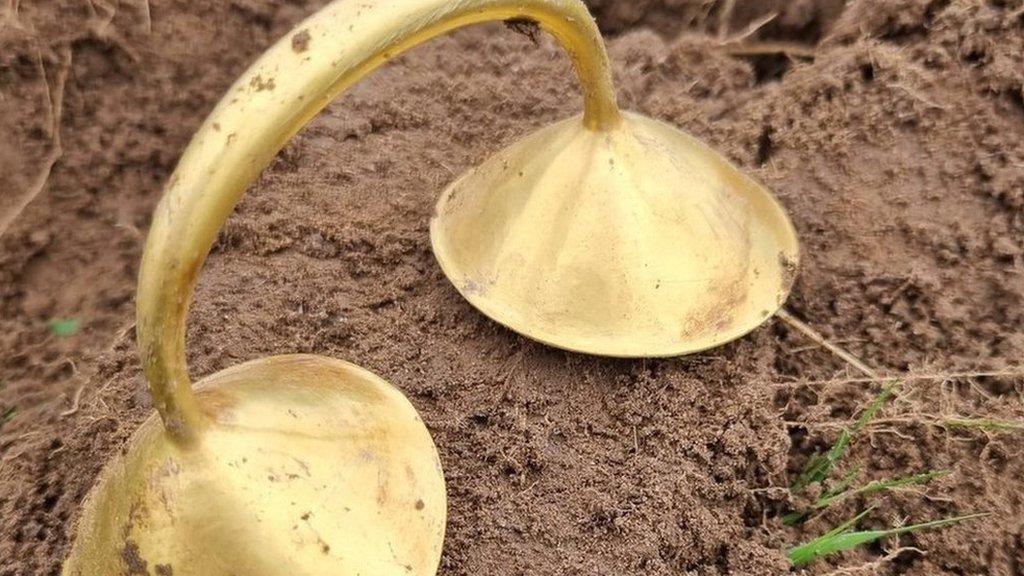River's Bronze Age 'offerings' to go on display

The collection includes 55 bronze objects, including swords and spears
- Published
Swords and spears dating back 3,000 years are to go on display together for the first time.
The items are believed to have been "offerings" to the gods, thrown into the River Trent in the East Midlands by our ancestors.
Prehistoric metalwork was ritually deposited in several of Europe's great rivers, including the Thames, Seine and Rhine.
But the 200 items found in and beside the River Trent are thought by archaeologists to form one of the largest finds in Europe.
'Standout pieces'
In total 55 of the pieces, most of which are not usually on display, will go on show from Friday until January 2025 at the University of Nottingham Museum.
Professor Mark Pearce, one of the curators of the exhibition, said the items would have been "the prized possessions of Bronze Age warriors and chieftains".
He added: "There are lots of standout pieces, which is the joy of this exhibition."
People of the Bronze Age, which stretched from 2200BC to 600BC, cannot have imagined the ways in which their offerings would later be discovered.
They were found mostly as a result of industrial sand and gravel quarrying and river dredging, although some items were found lodged in the riverbanks.

A bronze socketed chisel is one of the highlights of the collection due to the nature of its discovery
But one piece was found in a rather different way.
A 3in (8cm) bronze chisel was discovered in a bag of sand purchased at B&Q in Derby in February 2004.
It was later traced back to Shardlow Quarry in Derbyshire.
A sword was found when the lake at Highfields Park in Nottingham was dug out in 1902.

The items were found at sites along the River Trent in Nottinghamshire and Derbyshire
The exhibition also includes pieces found at quarries in Attenborough, Colwick and Holme Pierrepont in Nottinghamshire.
Dr Clare Pickersgill, keeper of the University of Nottingham Museum, said: "This exhibition is a wonderful opportunity to bring these artefacts together for the first time, and to discover what they can tell us about the region during this fascinating period of time."
The exhibition runs from 19 June to 5 January at the museum, which is located near to the Lakeside Arts Centre on the university's main campus.
Follow BBC Nottingham on Facebook, external, on X, external, or on Instagram, external. Send your story ideas to eastmidsnews@bbc.co.uk, external or via WhatsApp, external on 0808 100 2210.
- Published11 February 2024

- Published31 January 2024
